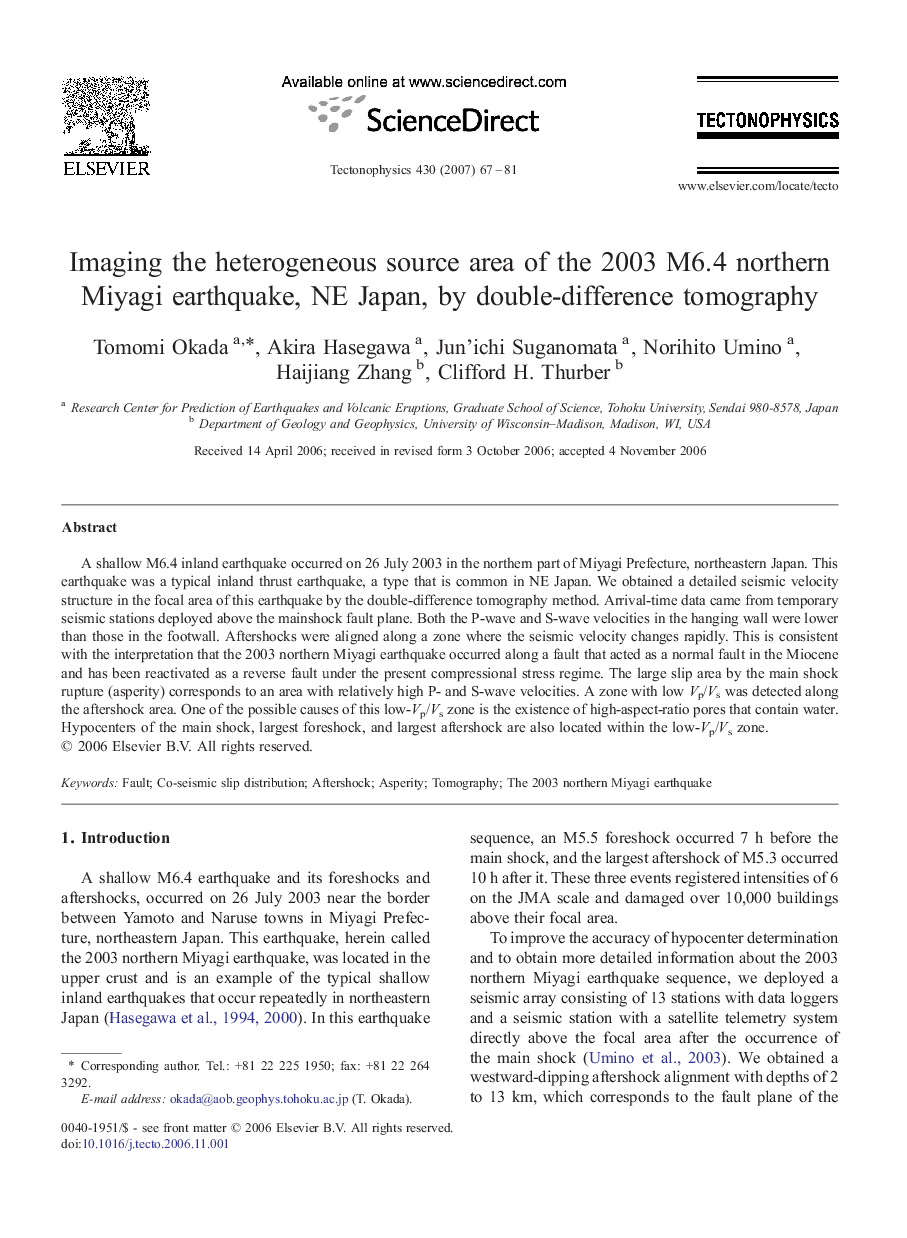| Article ID | Journal | Published Year | Pages | File Type |
|---|---|---|---|---|
| 4694746 | Tectonophysics | 2007 | 15 Pages |
Abstract
A shallow M6.4 inland earthquake occurred on 26 July 2003 in the northern part of Miyagi Prefecture, northeastern Japan. This earthquake was a typical inland thrust earthquake, a type that is common in NE Japan. We obtained a detailed seismic velocity structure in the focal area of this earthquake by the double-difference tomography method. Arrival-time data came from temporary seismic stations deployed above the mainshock fault plane. Both the P-wave and S-wave velocities in the hanging wall were lower than those in the footwall. Aftershocks were aligned along a zone where the seismic velocity changes rapidly. This is consistent with the interpretation that the 2003 northern Miyagi earthquake occurred along a fault that acted as a normal fault in the Miocene and has been reactivated as a reverse fault under the present compressional stress regime. The large slip area by the main shock rupture (asperity) corresponds to an area with relatively high P- and S-wave velocities. A zone with low Vp/Vs was detected along the aftershock area. One of the possible causes of this low-Vp/Vs zone is the existence of high-aspect-ratio pores that contain water. Hypocenters of the main shock, largest foreshock, and largest aftershock are also located within the low-Vp/Vs zone.
Keywords
Related Topics
Physical Sciences and Engineering
Earth and Planetary Sciences
Earth-Surface Processes
Authors
Tomomi Okada, Akira Hasegawa, Jun'ichi Suganomata, Norihito Umino, Haijiang Zhang, Clifford H. Thurber,
